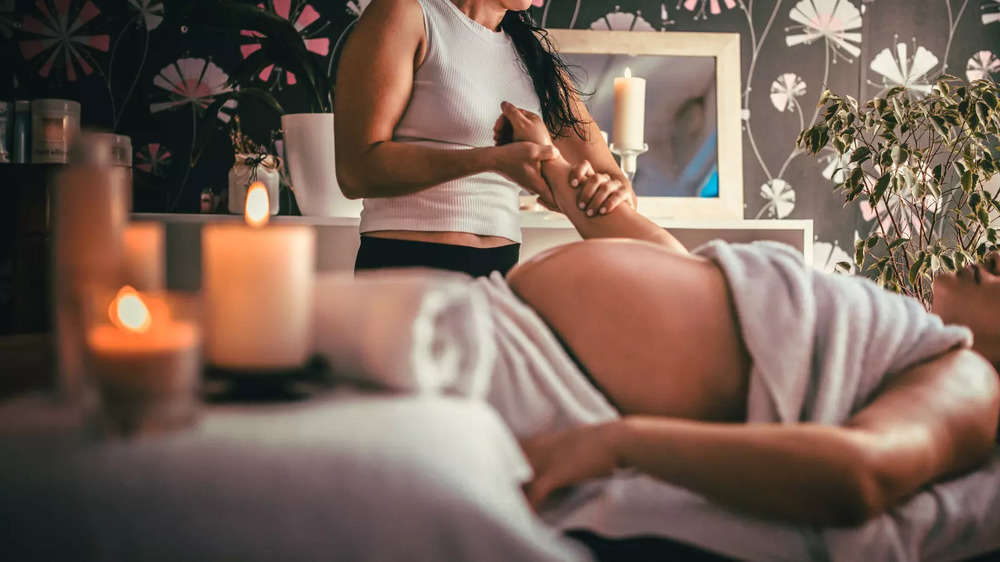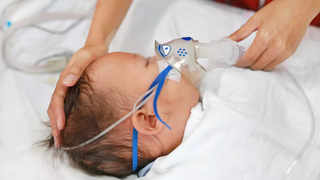In this article:
What Is A Prenatal Massage?
A prenatal massage is more than just a luxurious spa treatment reserved for special occasions; it is also a sort of therapy in integrative medicine. Trained specialists use their hands to provide pressure and movement to various regions of the body, stimulating muscles, ligaments, tendons, and skin. A prenatal massage is designed to target the tight areas that may be aggravated by pregnancy, all while prioritising your safety (and that of the baby).When Can You Have A Prenatal Massage?
The answer will most likely depend on your specific circumstances. You may have a prenatal massage at any stage of your pregnancy, even early on. A massage during the first trimester may be especially beneficial if you suffer from morning sickness. While there is no clear evidence linking messages to pregnancy-related nausea reduction, one study found that a 20-minute massage dramatically decreased nausea in breast cancer patients receiving chemotherapy.However, experts warn that certain facilities may refuse to provide prenatal massages to expectant mothers who are still in their first trimesters. This is owing to the higher chance of miscarriage, which is statistically more likely to occur during the first 12 weeks of pregnancy, as well as a desire to prevent any liability concerns. While research has not revealed a link between prenatal massages in the first trimester and miscarriage, depending on your pregnancy, your obstetrician may not suggest it until you're closer to 23 or 24 weeks to assure viability.
You may believe you've lost your chance to have a prenatal massage by the third trimester (after all, you can barely find a comfortable position, much less sit still for an hour). A massage, on the other hand, may help you relax and may even serve as a pre-labour workout. Contact your provider for assistance targeted to your individual circumstances.
Prenatal Massage Safety Tips
A prenatal massage is intended to benefit you, so you'll want to relax and feel that you and your baby are secure. A pregnancy massage is quite similar to a normal massage, but there are a few safety precautions to take:- Assume a secure stance: Beginning in the second trimester (and beyond), laying on your side—possibly supported up by pillows—is perfect for a prenatal massage
- Avoid extremes: Most massage therapists will not give hot stone massage to pregnant customers since elevating the core temperature is not advised during pregnancy
- Perform your due diligence: When getting a pregnant massage, always look for a registered massage therapist who specialises in prenatal massage, and receive your doctor's approval before scheduling an appointment
Benefits of Prenatal Massage
Prenatal massages have several advantages, including pain alleviation and hormone regulation. Massages can help regulate hormones like oxytocin and serotonin — hormones that make you a little bit happier. This may help you enhance your mood and cope with sadness and anxiety during and after pregnancy.These advantages may potentially be long-term. In fact, higher oxytocin production from prenatal massage may enhance labour outcomes. Oxytocin is known to help improve labour contractions as well as influence your bonding with your baby.
Additional advantages include:
- Pain alleviation
- Better rest
- Providing relief from sleeplessness
- Reducing stress and anxiety
- Reducing labour pain
- Relieving depression
Types of Prenatal Massage
According to experts, there are several prenatal massage modalities that therapists often utilise.- Swedish Massage.
- Myofascial release treatment
- Craniosacral Therapy
Where Not To Massage A Pregnant Woman?
Given the common aches and pains of pregnancy, several regions on a mother-to-be's body may benefit from additional attention; yet, there are a few areas that massage therapists would typically avoid while providing prenatal massage:- Leg veins
- Belly
- Ankles
When Is A Prenatal Massage Considered Unsafe?
As previously said, it is doubtful that a prenatal massage may induce labour; nonetheless, doctors warn that they may not be suggested for pregnant women with the following conditions:- Preeclampsia
- High blood pressure
- Gestational Diabetes
- Severe swelling
- A history of premature labour
- Other issues that may be worsened by massage
How Does Prenatal Massage During Pregnancy Vary From Normal Massage?
There is a legitimate reason why you feel relaxed after a massage. Whether you're pregnant or not, getting a massage may lower stress hormones and allow you to produce oxytocin. This might also help with depression and anxiety.However, getting a massage while pregnant looks and feels different from having one at any other time. A prenatal massage is generally going to be very light pressure — no more than a firm to medium pressure. It'll be more like a Swedish massage with very light stroking techniques, like kneading.
In other words, don't anticipate a deep tissue massage like you'd get for a severe knot in your neck or shoulders. The massage wouldn't be enough to cause any discomfort, and it really wouldn't feel like someone's kind of digging at you. If a pregnant person does have blood clots or anything like that, deep pressure can potentially dislodge them.
Prenatal Massage At Home: How to Massage a Pregnant Woman?
You may be tempted to hire a live-in masseuse for the length of your pregnancy, but relying on your partner, a family member or a vibrating masseuse may be the best option.Make sure you're comfy before proceeding with the setup. When laying on your side, tucking supporting pillows underneath you helps to maintain your body in proper alignment. Place a cushion between your knees to provide extra support. Next, decide whether you want to use a lotion or a massage oil. While essential oils are not required for an effective at-home prenatal massage, aromatherapy may improve the experience. Simply inhale the oils before use to ensure that your heightened senses are not offended, and avoid essential oils that are not suggested during pregnancy (such as fennel and sage).
Are you ready to experience a prenatal massage at home? Here are some valuable tips from professionals:
- Foot massage during pregnancy: Your partner can still massage your feet as long as they avoid the ankles. Note that in acupressure, the flat side of the heel is associated with the lower back and glutes, whilst applying pressure to the region beneath your big toe may ease neck discomfort.
- Leg massage during pregnancy: Instead of kneading your leg muscles (particularly if you have varicose veins), have your partner spin your thigh muscles (quads and hamstrings) around your femur—clockwise first, then counterclockwise—while you stand leaning over a chair or countertop. These leg muscles attach to your lower back and pelvis, so you'll feel everything releasing with the motion.
- Hip massage during pregnancy: Experts suggest a standing "double hip squeeze," which may be a beneficial massage during pregnancy and labour. Lean forward onto a table or countertop, using your forearms to support your upper body. Ask your partner to stand behind you and press your glutes' fleshy sides inwards. They should hold your hips, but not rub them, for 10 seconds before releasing. Repeat a few times. The counter pressure of your partner's palms pressing into your hips will relax your lower back, hips and upper legs.
- Back Massage During Pregnancy: You may accomplish this by lying on your side or straddling a chair. Start with your lower back, exert pressure with your fists on the upper buttock area, and work your way up the spine.
- Shoulder massage during pregnancy: Because your neck and shoulders are tense, ask your partner to relieve any knots using lengthy, moderate-pressure movements along your trapezius muscles—the back muscles that reach down your neck, out to your shoulders, and into your upper back, producing a trapezoid shape. During pregnancy, expecting mothers' posture shifts to accommodate the increased amount of weight on the front of the body. Because of this, it's so important to focus on massaging not only the lower back but also the neck and upper back.
Talk To Your Doctor About Prenatal Massage
If you're pregnant and want to have a massage, experts suggest talking to your doctor beforehand. This is also true whether you're actively attempting to conceive or suspect you may be.However, an occasional massage may be a wonderful pleasure when pregnant. During pregnancy, many items are restricted, such as certain meats and fish, coffee, sodas, and sweets. So, you are not necessarily restricted in your massage options; rather, the pressure and methods must alter. If you're in a lot of discomfort, a prenatal massage may help.
FAQs on How to Safely Enjoy a Prenatal Massage?
- How safe are prenatal massages?
The answer is generally yes. Massage treatment during pregnancy has been demonstrated to provide a variety of advantages, including increased well-being, relaxation, and sleep. - How should I lie during a prenatal massage?
Sitting up, resting on your side, or semi-reclining are all viable possibilities. Some spas feature massage tables with a hole carved out to fit your bump.











